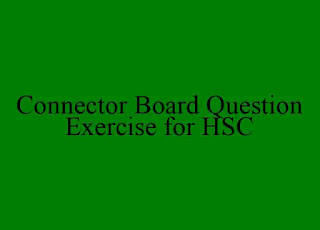Romantic elements in W.B Yeats poetry
William Butler Yeats is one of the major and influential modern poets, his poetry is soaked in the Romantic Tradition. The early period of his poetry, known as ‘Celtic Twilight’, is marked by subjectivity, high imagination, romantic melancholy, escapism and the romantic interest in myth and folklore.
In one of his poems, Yeats declared himself to be one of the ‘last romantics’. It is true that in his later poetry, Yeats gradually cut himself loose from the romanticism, but the ingredients of romanticism are present in them too.
Escapism from the realities of life is a distinctly romantic quality. This quality is found in the poem ‘The Lake Isle of Innisfree’. Yeats in this poem expresses a desire to escape from the roar and din in the busy London life to the beautiful and quiet island of Innisfree. He intends to build his own cottage and produce his dailies with his own hands. He also wants to be entertained by the sweet music of the birds and insects.
Yeats's mysticism like that of Blake is also a romantic trait. To Yeats, a poet was very close to a mystic and the poet's experience like the mystics is capable of giving to the poem a spiritual world whose existence is very real. In the poem ‘The Second Coming’, Yeats feels that the forces of Christian love are almost spent and that a new, brutal force is about to take over:
And what rough beast, its hour come round at last.
Slouches towards Bethlehem to be born?
A very important ingredient of Yeats's romanticism is his use of symbols. Yeats was inclined towards symbolism in the very modern sense of that word. He had a large number of symbols at his disposal. The Irish mythology is nearly as rich in great stories and figures because the Greek mythology, and equally rich is that the borderland wherever myth and history meet. It was upon this huge store that he drew for symbols.
Self-revelation is another romantic element in Yeats's poetry. A large bulk of Yeats's poetry relates to his own personality, his inner conflicts, his friendship etc. ‘A Prayer for My Daughter and Sailing to Byzantium’ are deeply personal poems. In ‘A Prayer for My Daughter’, Yeats expresses his hopes and fears about the future of his daughter, Anne, and in Sailing to Byzantium Yeats expresses the problem of his old age.
Love too is regarded as a romantic theme.
Yeats wrote a large number of love-poems, but all of them cannot be regarded as romantic. The romantic poet exalts and glorifies love. For him, love is a grand and sublime passion. The early work of Yeats does contain a number of romantic love poems. And in a number of poems, Yeats expresses his vain longing for his beloved.
Yeats's love for mythology is also a romantic trait. Many of his poems repeatedly refer to Helen of Troy, Leda, Zeus, Venus, Aphrodite and Byzantium. There are dolphins, nightingales, mythological beasts, Sphinx-like figures and fairy-like figures. And the revival of the ballads and other song forms was also part of the romantic revival. Yeats wrote quite a few ballads and songs.
Yeats's love for mythology is also a romantic trait. Many of his poems repeatedly refer to Helen of Troy, Leda, Zeus, Venus, Aphrodite and Byzantium. There are dolphins, nightingales, mythological beasts, Sphinx-like figures and fairy-like figures. And the revival of the ballads and other song forms was also part of the romantic revival. Yeats wrote quite a few ballads and songs.
To sum up, there are clear romantic qualities in the poetry of Yeats and some aspects of his poetry retained a trace of romanticism to the end but he was such a dynamic poet that neither romanticism nor any other ‘ism' could have held him long enough.
Romanticism associated with the lyricism, and the escapism suited Yeats's well when he was a young poet, but he was quick enough in outgrowing these and stepping into a maturer, the more economical and orderly poetic mode which was a synthesis of the best that was available to the poet at the beginning of the modern era in poetry.




